Sesuvium portulacastrum (L.) is a fast growing, herbaceous, perennial, dichotomous, facultative halophyte belonging to Aizoaceae family. It is commonly known as Sea Purslane. It is a mangrove and facultative halophyte with great phenotypic plasticity. It can tolerate different environmental stresses like high salinity, drought and heavy metal stress. Sesuvium is also used for sand-dure fixation, desalination and phytoremediation along coastal regions. It generally grows in the subtropical, mediterranean, coastal and warmer areas around the world. It has the ability to switch from halophytic to glycaphytic or vice versa depending upon the environmental factors.
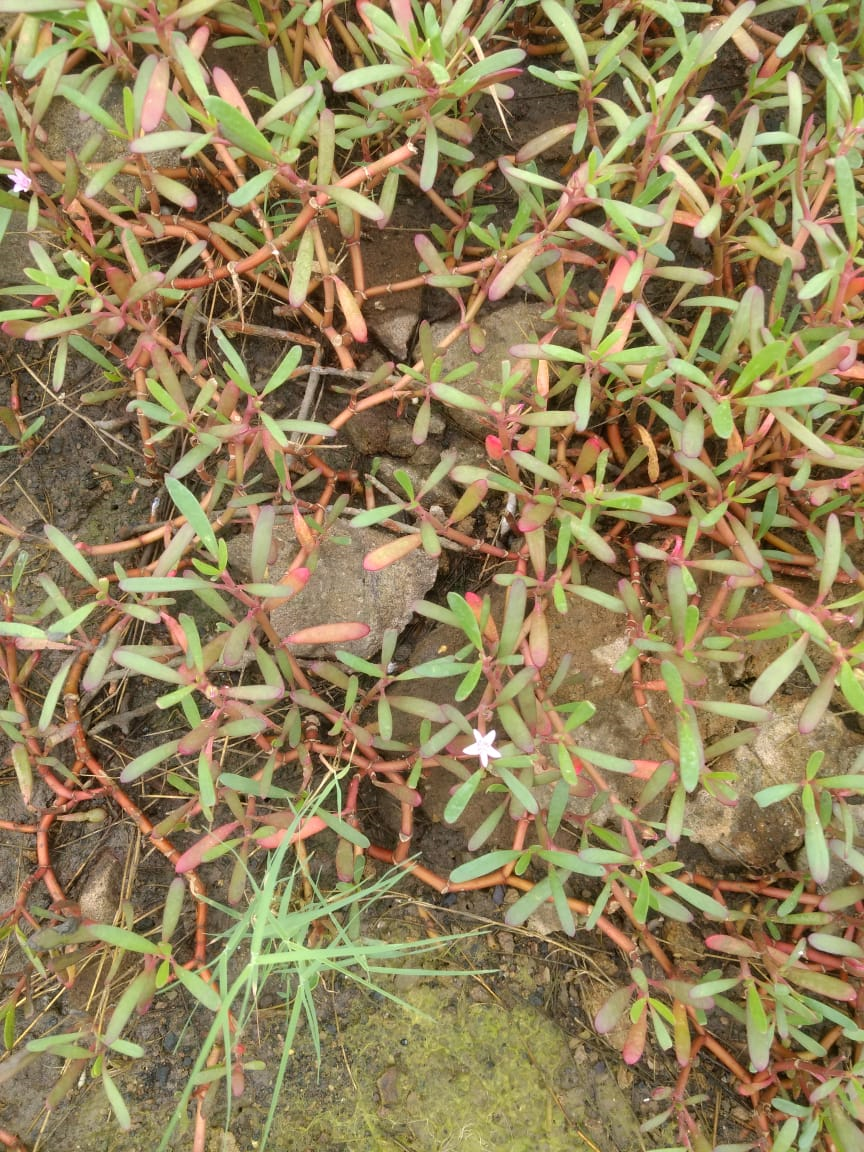
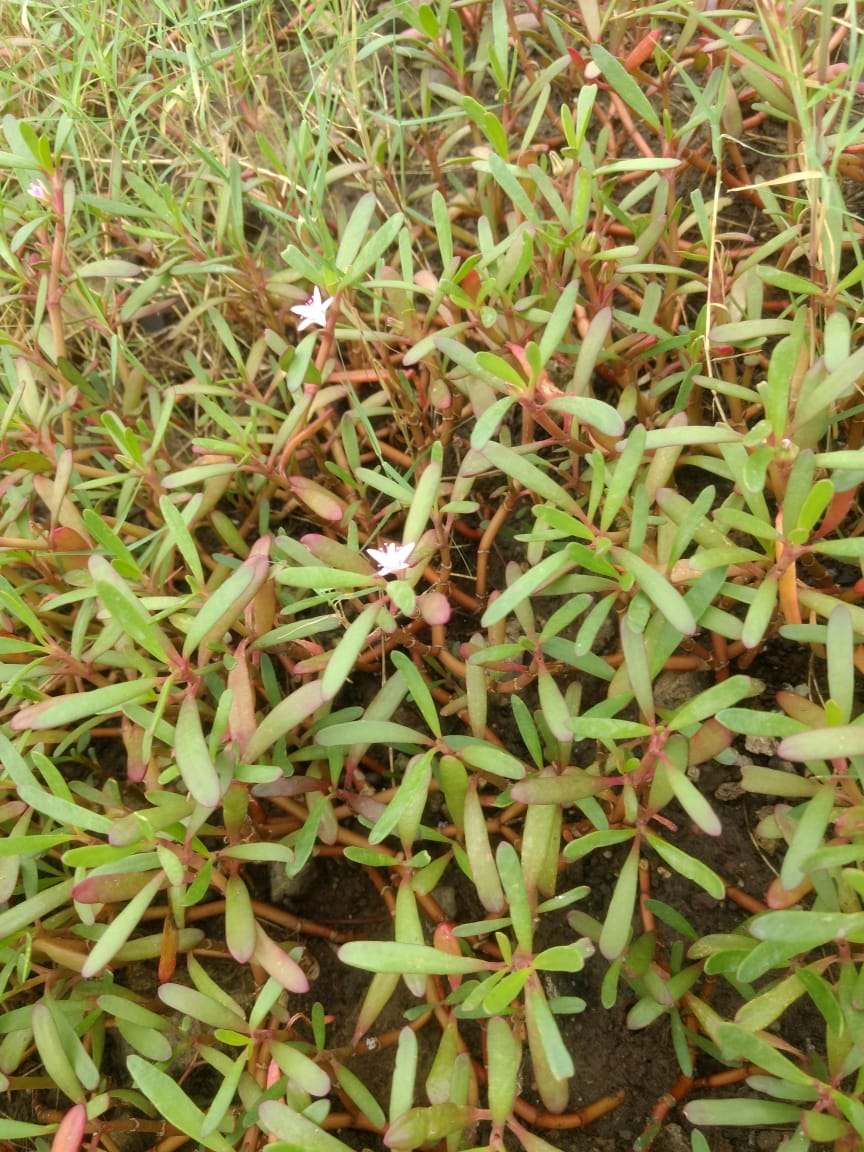
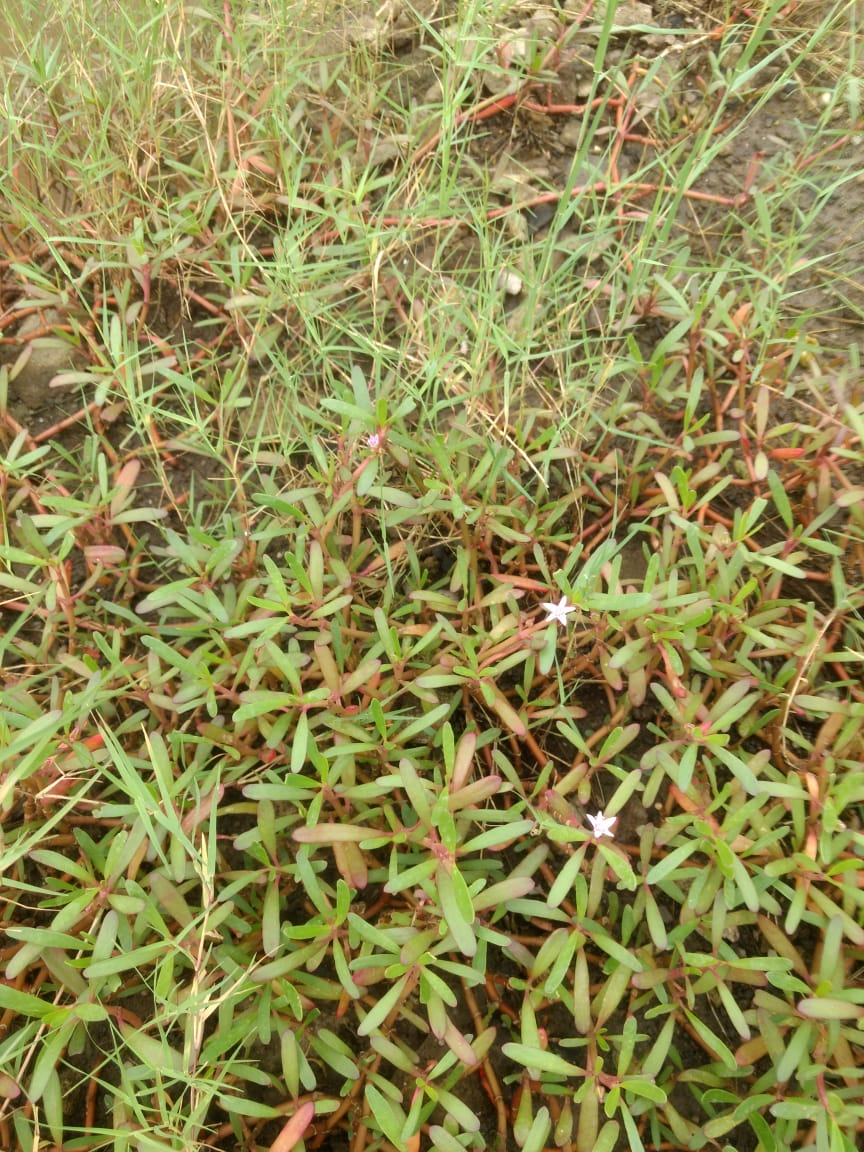
Browse
Gene Search
Sequence Search
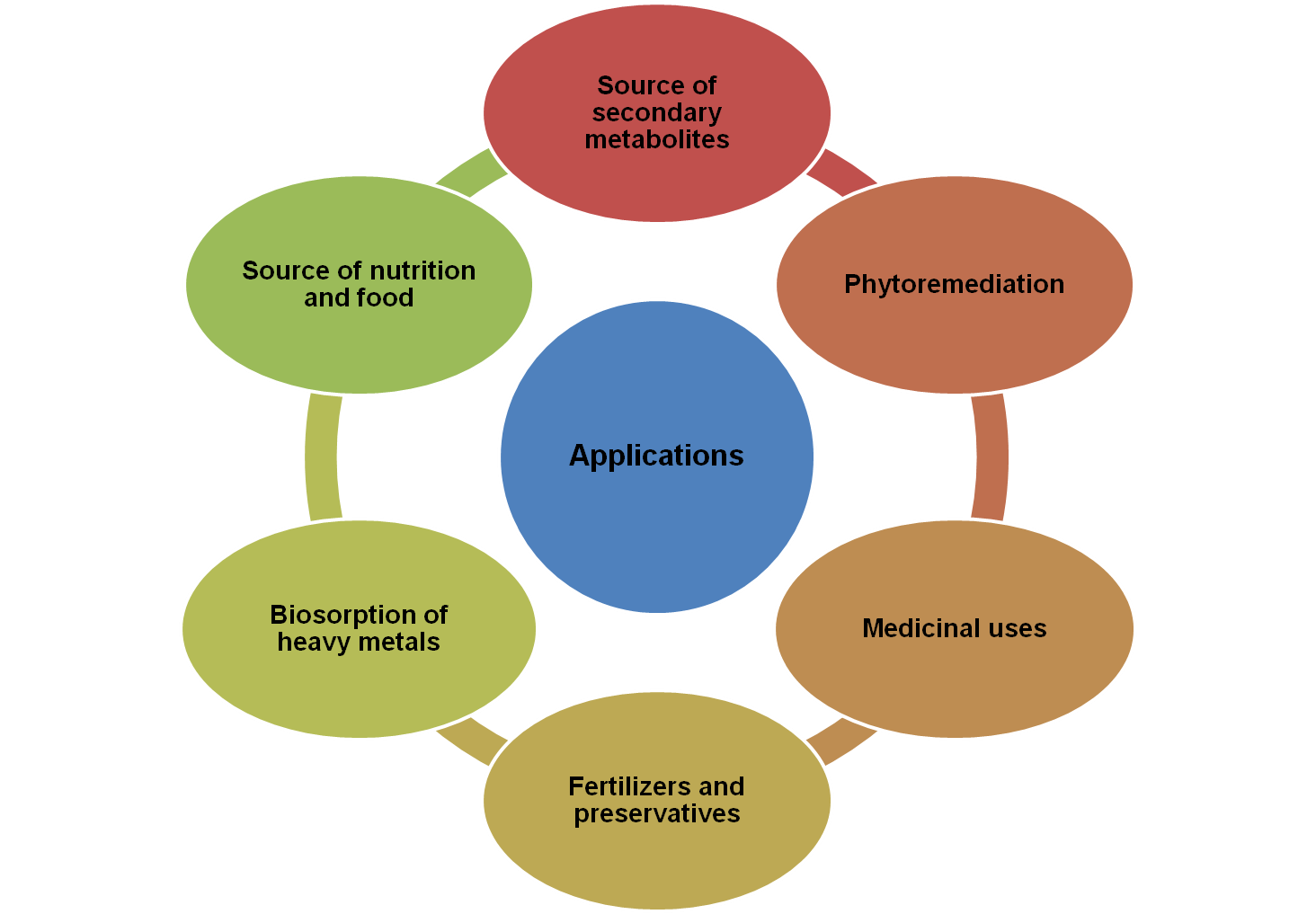
The applications of Sesuvium are Phyto-remediation, Phyto-desalinization and the secondary metabolites produced by Sesuvium have the potential to substitute some synthetic raw materials in food, perfumery, cosmetic and pharmaceutical industry. Occasionally it is used as a vegetable for cooking purpose in South East Asia. It is a source of organic fertilizers and preservatives.
Taxonomy classification| Genus | Sesuvium |
| Family | Azoaceae |
| Order | Caryophyllales |
| Subclass | Caryophyllidae |
| Class | Magnolipospida (Dicotyledons) |
| Division | Magnoliophyta |
| Superdivision | Spermatophyta (Seed plant) |
| Subkingdom | Tracheobionta (Vescular plants) |
| Kingdom | Plantae (Plants) |
Statistics of shoot and root transcriptome
SesuviumKb contains transcriptome information for 89295 shoot transcripts and 87369 root transcripts. The pie charts below show the percentages of annotated and unannotated transcripts in the shoot and root transcriptome of Sesuvium plant. The chart also indicates the percentage of differentially expressed genes (DEGs) identified among these transcripts.
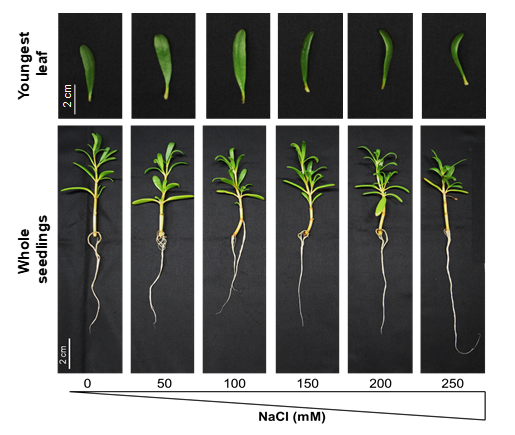
Phenotyping of Sesuvium under different salt concentrations: The differential phenotype of Sesuvium seedlings under different treatments were studied by hydroponically growing Sesuvium seedlings for 15 d under control conditions and then subjected to either control or variable NaCl concentration (50-250 mM NaCl). At 15 d after treatment, differential phenotype was recorded.
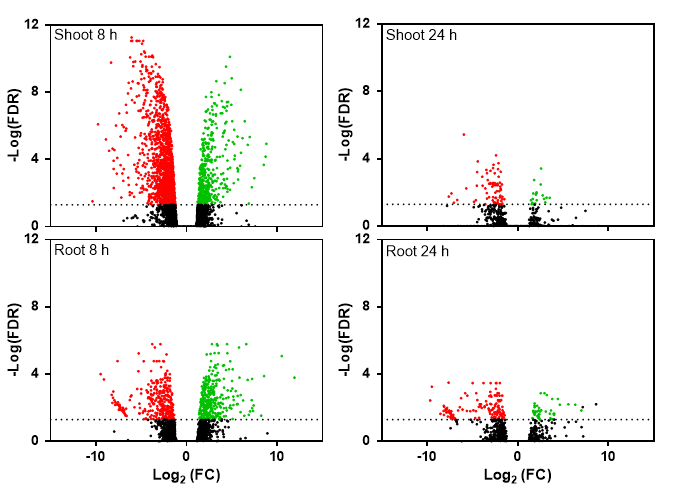
RNAseq analysis in Sesuvium seedlings under NaCl stress conditions. The 15 d old hydroponically grown Sesuvium seedlings were subjected to either control or 250 mM NaCl stress. At 8 and 24 h after treatment, root and upper leaf were harvested and total RNA was extracted for RNAseq analysis. The Library preparation and RNAseq was performed as per the Illumina platform.
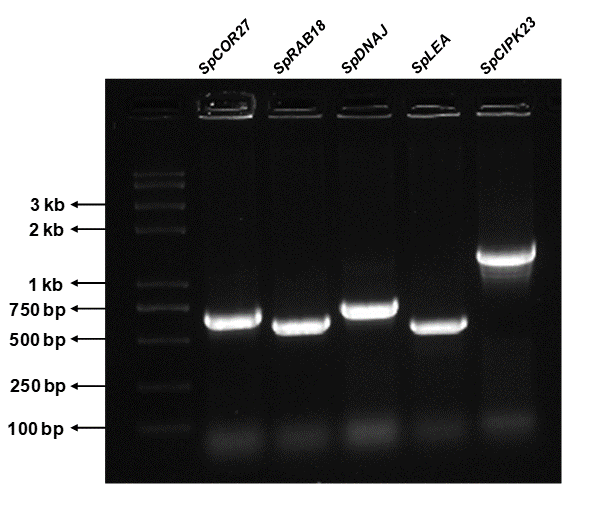
Cloning of salt-responsive genes from Sesuvium: Salt-responsive genes including (SpCOR27, SpDFP/SpRAB18, SpDNAJ, SpLEA and SpCIPK23) genes were identified based on transcriptome data and literature. The amplified sequences were cloned in plant expression vector PC1305-3FLAG with help of restriction enzymes Kpn I and Sal I. PCR amplification and sequencing of cloned vectors with gene-specific primers confirm the cloning of genes.
CITATION
If you use our resource, please cite the following research article:Jayant Kulkarni1,2, Sripati A. Sahoo2,3, Pawel Herzyk4, Vitthal T. Barvkar1, Sanjukta A. Kumar5, Janani Ravichandran6,7, Areejit Samal6,7, Anna Amtmann4, Mahesh Borde1, Penna Suprasanna2, Ashish K. Srivastava2,7,*, Early-responsive molecular signatures associated with halophytic adaptation in Sesuvium portulacastrum (L.) Plant, Cell & Environment (2023) DOI: 10.1111/pce.14767.
1 Department of Botany, Savitribai Phule Pune University, Pune, India
2 Nuclear Agriculture and Biotechnology Division, Bhabha Atomic Research Centre, Mumbai, India
3 Department of Plant Molecular Biology and Biotechnology, Indira Gandhi Krishi Vishwavidyalaya, Raipur, India
4 School of Molecular Biosciences, College of Medical, Veterinary and Life Sciences, University of Glasgow, Glasgow, UK
5 Analytical Chemistry Division, Bhabha Atomic Research Centre, Mumbai, India
6 The Institute of Mathematical Sciences (IMSc), Chennai, India
7 Homi Bhabha National Institute, Mumbai, India
* Corresponding author